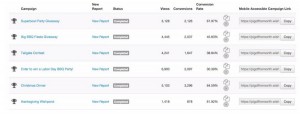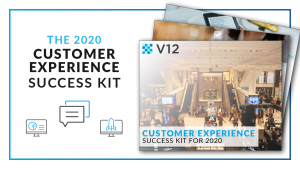How many marketing emails are currently in your inbox? And how many times have you interacted with a business because of one of those communications? The fact remains that while it’s common for people to delete marketing messages without reading them, it’s still also true that they’ve resulted in inquiries for more information and sometimes even new purchases.
Knowing this dichotomy means that whenever you send your own marketing emails, they could go ignored — or they could bring more leads to your proverbial door. And to ensure the highest likelihood of the latter, you want to make sure you’re using effective email marketing tools. This is where HubSpot can help you stand out from the competition.
Why Email Marketing Is So Effective
Email marketing is effective for many reasons:
- It can be tailored to the readers’ individual needs
- They get to read it at a time when it’s convenient for them
- You can use it as educational, promotional, or reengagement strategies
- You remain in regular communication with your target audience
- It helps build long-term relationships with your audience
- It can help you establish yourself as an industry expert
- It ensures you remain top-of-mind
Email Marketing Statistics for B2B
The Content Marketing Institute conducts annual studies relating to B2B content marketing. IN 2018, they found that approximately 79 percent of B2B marketing companies reported that email is their most successful method to distribute content.
Email marketing is also cost-effective. Generally, for every $ 1 spent on this type of communications, marketers receive $ 36 in return.
Also, 52 percent of B2B buyers report that they’re definitely more likely to make a purchase from a brand after they’ve read their content. While they could find you organically through online searches, reaching out to them via marketing emails ensure that they see you in their inbox, regardless of whether they’ve entered a term on a search engine.
Finally, 99 percent of email users check their email daily. Therefore, deploying effective email marketing campaigns ensure that your target market sees your content regularly.
Email Marketing Best Practices
While every marketing campaign is different, there are certain elements that set the stage to reach your goals. Before getting started, take some time to do all of the following:
Define the Campaign Goals
When you develop an email marketing campaign, you can’t go in blindly, hoping that something sticks. You have to set specific targets in mind — to increase website visitors, to get more people to sign up for your blog or newsletter, to promote a new product or service. This is crucial, because it provides you with a roadmap and gives you specific metrics to track the campaign’s progress (e.g. the number of people taking the desired action).
Develop a Buyer Persona
Once you have your goals, you have to become laser focused on your ideal customer. A 65 year old who’s seeking information on medical procedures is not going to consume content the same way a 30 year old who’s running a social media platform. Therefore, you want to conduct market research and make educated guesses on your target audience’s demographics, preferences, job roles, etc… Developing a buyer persona will help you do this effectively.
Do Not Buy Contacts Lists
If you have a relatively new business — or if you’re just getting started building your email list – you may be tempted to buy contacts list. Don’t do this. First of all, you want to send communications to people who want to hear from you. When you build your contacts list organically, you’re communicating with people who choose to join your mailing list. But if you buy someone else’s list, you’ll end up with a low open rate, and a lot of people unsubscribing or reporting you as spam.
Entice People to Sign Up
Ok. So how do you get people to join your mailing list in the first place? You can do so with lead magnets. This means providing something in exchange for a user’s email address. For example, giving them resources to help them with pain points you know they’re experiencing — eBooks, white papers, worksheets, checklists. You can also offer a discount code for their first purchase. Make sure you’re actually providing value, and watch them willingly give you their contact information.
Segment Your Contacts
A repeat customer doesn’t need the same kind of information that would be beneficial for someone who’s first interacting with your business. Therefore, you should have a customer relationship management (CRM) platform that enables you to segment your contacts based on where they are in the sales funnel.
Use Templates
There’s no need to reinvent the wheel every time you start a new email marketing campaign. HubSpot makes this easy by providing user-friendly templates that don’t require coding knowledge. They have drag-and-drop capabilities, and you can design your templates to match your brand identity.
Scrub Your Email List Regularly
Update your email list regularly. This will ensure that you get rid of those that have been deactivated, deleted, are permanently full, or result in constant email bounces due to a typo. Scrubbing your email list will also eliminate those contacts who aren’t responsive to your communications. This will improve your deliverability rate; and as a result, you should also see an increase in your open rates.
Use Preview Text
Email subject lines should be limited to 60 characters. This ensures the recipient can read the entire thing, whether they’re checking their email from a desktop or from a mobile device. This can be challenging, especially when you want them to be clear on what to expect when they open the emails. This is why preview text provides you with a golden opportunity to expand on what you have to say and provide a bigger incentive to read your messages.
Create Campaign Assets
Creating campaign assets makes email campaigns run as smoothly as possible. This includes designing content that will be used regularly in your communications: Welcome emails, call to action buttons (CTAs), thank you emails, your download is ready messages, lead magnet/content offer CTAs. Once they’re created within a campaign, HubSpot makes it really easy to add them with the click of a button.
Avoid Using “Do Not Reply” Email Addresses
Customer service is the backbone of any business. Even if you sell products or services that blow the competition out of the water, if customer support is lacking, they will gladly switch to a competitor. Therefore, always make it as easy as possible for people to reach you. While younger generations may prefer to use live chat or social media, you still want to have a real person answering emails. HubSpot streamlines this process by enabling you to create customer support tickets any time someone reaches out to you with a concern, and keeping everything in one centralized location.
Reply Promptly to Customer/Lead Concerns
Even if you provide extraordinary goods and services, providing good customer service will keep your clients happy, retain them long term, and likely also result in referrals. And replying promptly to customer questions/concerns is an essential component of good customer service. In addition it sets the tone for their relationship with you — lets them know that you’re reliable and care about what they have to say and meeting their needs.
Keep It Simple
Everybody’s busy. Unless you’re sending a newsletter, stick to one subject, and keep it short. Include in the subject line what’s inside, and be as succinct as possible. No one wants to read walls of text or try to figure out what you’re trying to say.
Don’t Be Salesy
People tend to run away from car salesmen and MLM reps for the same reason — their only goal is to make a sale. They can be sweet. They can be charming, but it’s all due to their ulterior motive. And yes, you obviously want to make a sale yourself. However, if you make it just a transactional relationship, people won’t really have a reason to listen to you except when they’re ready to open their wallets. On the other hand, if you provide helpful information, they are more likely to be receptive. For example, including industry-specific news, tutorials, How To Guides, infographics, statistics, or anything else that makes their jobs easier shows them that you are also interested in providing value to them, regardless of whether they’re ready to buy.
Conduct A/B Testing
A/B testing lets you take two different versions of your communications live. This allows you to see which one performs best. To make this process effective, test one element at a time — an email subject line, CTA wording, email length, colors, format, etc… If you do two or more at once, you won’t be able to accurately gauge what was the factor that proved most effective.
Include a Strong Call to Action
Always include call to action buttons on your marketing emails. Make sure they’re visually appealing, it’s obvious they’re buttons, and add action-oriented words that let the reader know exactly what will happen when they click on them. For example, a CTA that says: Let’s Get Started is not as effective as one that says Schedule a Call, or Download eBook.
Provide an Easy Opt-Out
Not only is it annoying to receive emails someone is not interested in, the CAN-SPAM Act is a federal regulation that requires commercial email messages give recipients the right to unsubscribe from them. It applies to both B2B and B2C marketing emails, and violators are subject to penalties of up to $ 43,792 for each separate email.
Proofread Before Sending
Few things make you look as unprofessional as sloppy grammar. While it’s understandable that they may happen — either due to grammatical errors or typos — it’s crucial to always have a second set of eyes proofread content before approving them. Even if the content creator is good as spotting such issues, they may not find them after writing extensive amounts of content. So make sure to enlist someone else from your team to do a final read through.
Monitor Your Metrics
The only way to know whether a campaign is effective is to track its progress. While things such as a ringing phone may give you reliable clues, it may take a while to get someone to pick up their phone and call you. However, studying how many people are reading your emails and clicking on your calls to action will give you insights as to what’s working and what may need to be modified.
Email Marketing KPIs to Measure
Ok. Remember how we mentioned tracking progress? When creating your dashboards, make sure to include all of the following metrics:
Deliverability
This term refers to how many people are actually receiving your emails. Factors that influence this number include a recipient’s inbox is full, emails getting reported as spam, unsubscribed users, and hard and soft bounces. The former refers to when emails are undeliverable due to permanent reasons, such as an expired domain or inactive email address. On the other hand, soft bounces refer to temporary situations, such as a server that’s down or a full inbox.
Open Rate
The open rate is how many people open your emails. This is one of the most important metrics in email marketing campaigns. To calculate it, divide the number of emails that were read by the number of delivered emails. What constitutes a great open rate depends on your industry, so that will be part of your market research.
Click Through (CTR) Rate
The click-through rate refers to how many people click on the call-to-action buttons. To calculate it, divide the number of people who clicked on your marketing emails’ CTAs by the number of opened emails. If your CTR is low within your industry’s standards, try different A/B testings.
Unsubscribers
It’s unavoidable that some people will unsubscribe from your marketing emails; so don’t take it personally when it happens now and then. However, you want to keep this rate at around 2 percent or less — give or take a few points based on your industry. To keep it at its lowest level possible, give your readers the option to set the frequency and the type of emails they receive. And if that doesn’t work, it’s time to modify your strategy. Pay attention to open and click through rates to see where to get started.
The 9 Best HubSpot Email Marketing Tools
Now, while there are plenty of email marketing software that can help you with your goals, at Bluleadz, we prefer HubSpot above any other platform due to its all-in-one solutions, including:
1. Contacts Segmentation
HubSpot’s email marketing tools lets you organize your contacts into categories to make it easier to personalize messages. There are multiple options to select their criteria (age, job roles, stage in the sales funnel, etc…) Doing this ensures that you only send content that’s relevant to them. HubSpot also automatically updates lists when contact information changes.
2. Sync with CRM
You won’t have to enter your contacts manually into HubSpot’s list segmentations, since it automatically syncs with your CRM. This makes it even easier to set up contact behavioral triggers to receive email sequences. And all information relating to your contacts’ interactions with your email marketing campaigns will be logged in their CRM card,
3. Templates Library
HubSpot has an extensive marketing emails template library. You also get additional resources to help you develop customer profiles, value propositions, and calls to action. You can also customize existing templates to personalize and match your brand voice. And since they sync with your email, you can use an existing one or create one from scratch from your inbox.
4. No Coding Knowledge Needed
Since HubSpot templates are prebuilt and have drag-and-drop functionalities, you can design emails the way you want them to look without having to learn anything about coding. You set them up instantaneously, and when you’re done designing them, they’re ready to be sent.
5. Personalization Options
Your leads and customers aren’t cookie-cutter, so your communications with them shouldn’t be, either. And while adding a recipient’s first name to an email is a starting point, it’s not enough. HubSpot enables you to use personalization tokens in email subject lines, then create smart content rules to display different emails based on the reader’s category.
6. Automated Emails
Marketing automation makes it a lot easier for you to focus on doing your job instead of doing repetitive tasks — such as sending marketing emails. HubSpot makes it easy to automate campaigns so that you can guide prospects along the sales funnel. Set up each behavioral trigger, and emails will be deployed once a prospect takes the desired action.
7. Email Signature Generator
While everyone knows what an email signature is, HubSpot lets you customize them based on a prospect’s circumstances — such as adding a specific call to action, include your certifications that are relevant to what that prospect needs, or include relevant banners. Or you can simply use one of the templates to create a consistent email signature that matches your brand style and colors for all of your team members.
8. A/B Testing Capabilities
HubSpot also makes it easy to try out different versions of the same email with different recipients. Then, once enough people have interacted with both versions, the platform will show you which one performed best and send that one to your contacts moving forward.
9. Protect Customer Data
HubSpot provides a myriad of security measures to ensure your peace of mind – including in-transit and at-rest encryption, firewalls, DDoS protections, regular vulnerability scannings, network and perimeter protection, and it’s all hosted on secure infrastructure. In addition, they offer 24/7 monitoring and incident response, as well as security education and awareness training.
How To Create an Email Marketing Campaign on HubSpot
Every email marketing campaign has different needs, but start each of them by doing the following:
- Make sure that everyone on your email list has opted-in to receive communications from you.
- Scrub your email lists to start with contacts that are sure to receive your messages.
- Segment your contacts based on campaign-specific categories.
- Draft email content for each category.
- Set a delay between each email communication.
- Send test emails to yourself so that you can ensure that the subject lines, preview text, and content look the way they should. Also pay attention to loading times and that calls to action lead readers to the desired page.
- Set up A/B testing.
- Set up your analytics dashboards.
- Review HubSpot’s Knowledge Base to read instructions on how to complete each step.
As you can see, effective email marketing requires a lot of strategizing and careful considerations. But done correctly, it will help you scale your business more effectively than any other method.
Digital & Social Articles on Business 2 Community
(16)






